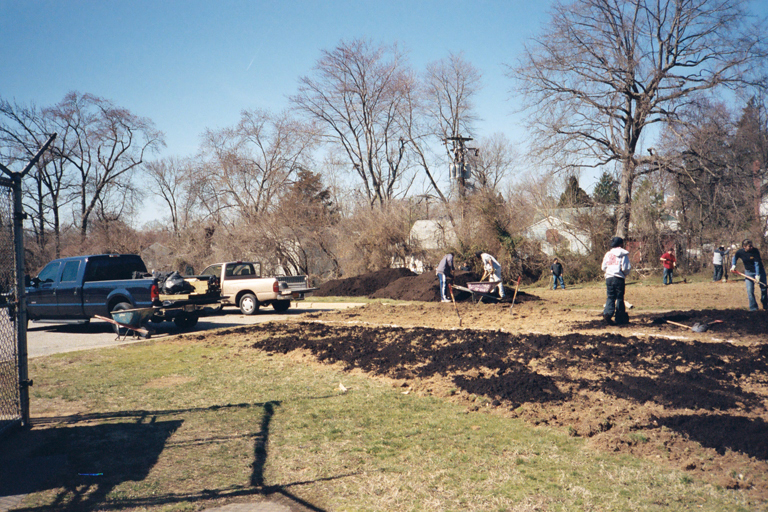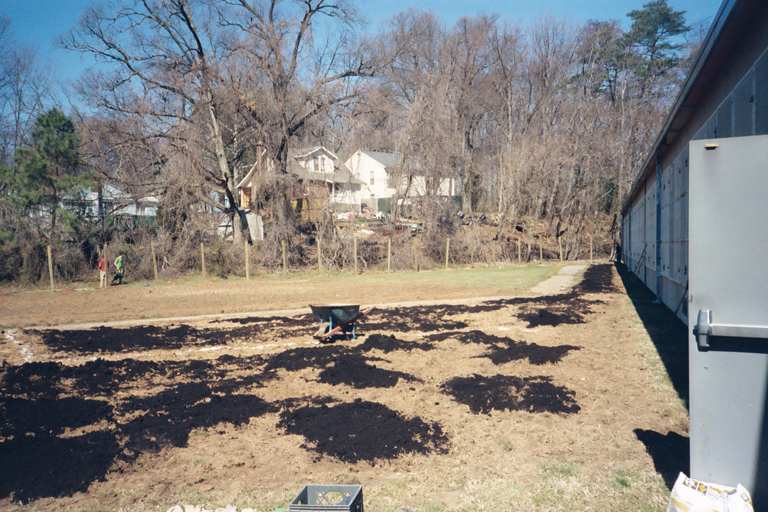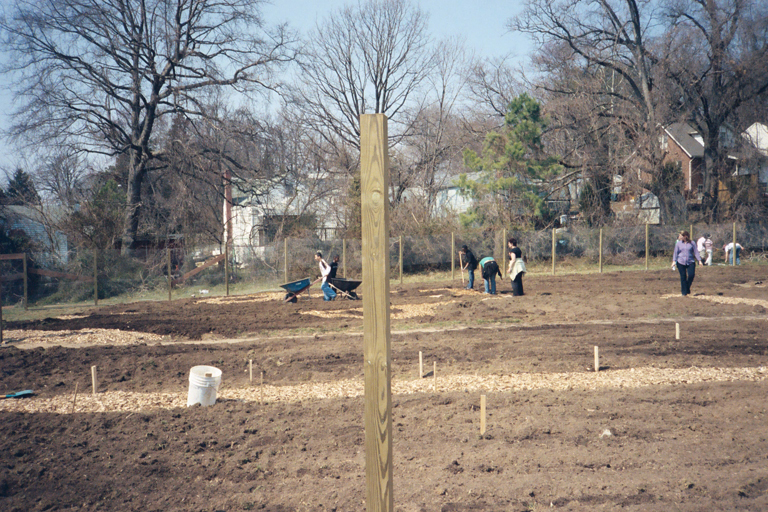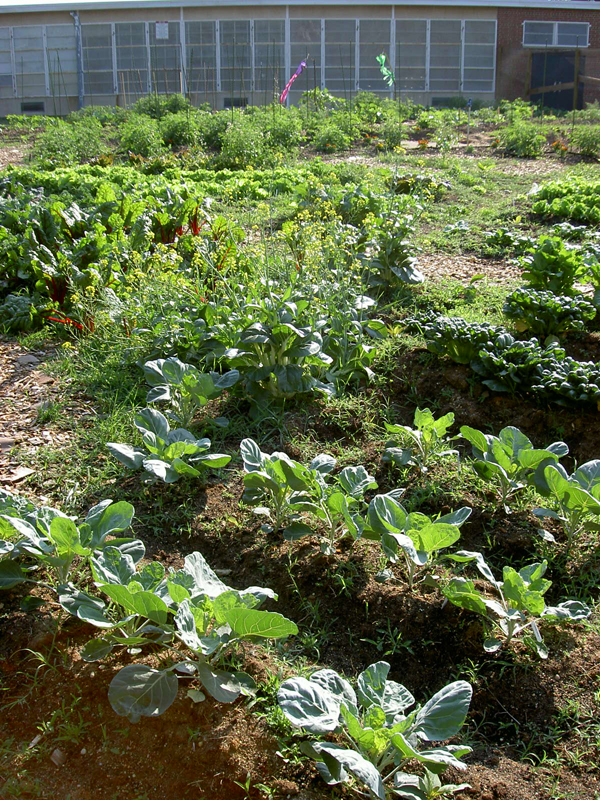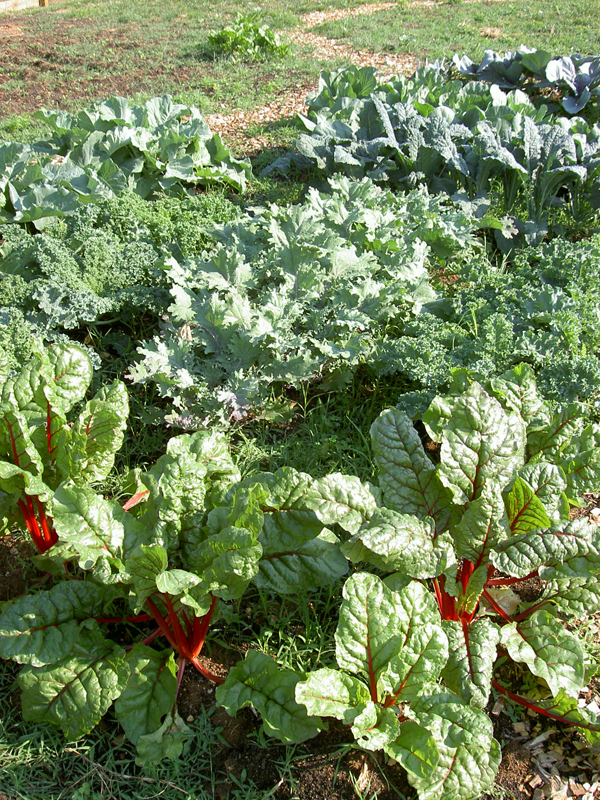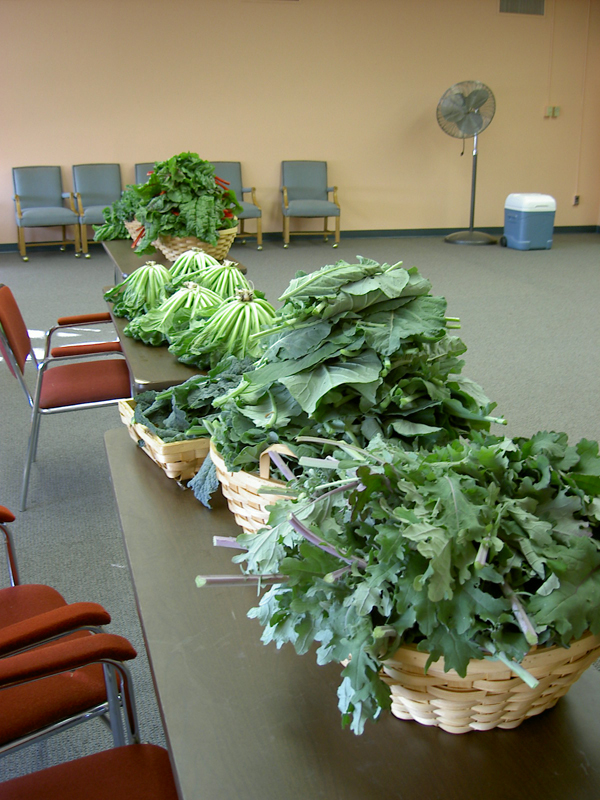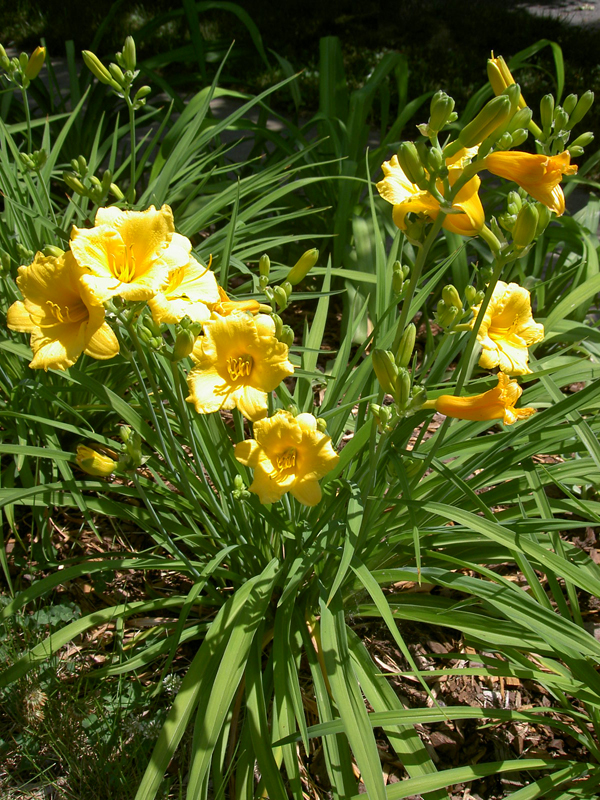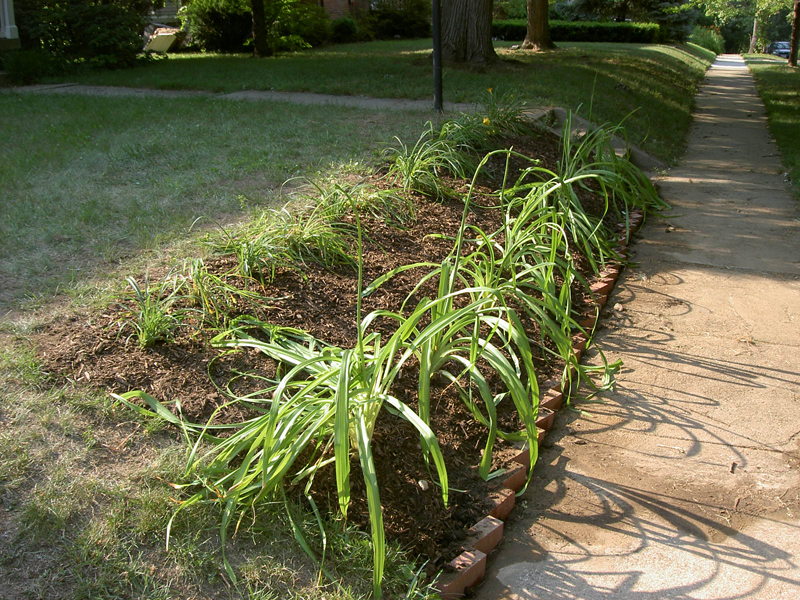I’ve been busy lately, and hadn’t realized how much time had passed since I’ve gotten it together to write up anything I’ve been doing. The thing that’s been keeping me busy has been gardening. Although gardening is a far too genteel way of describing what we’ve been doing. Yard work is really too tame as well. In both cases, maintenance of an already-existing yard or a garden is implied. That is not what we have.
What we have is a temperate jungle. I have never had much empathy for the Europeans who came to occupy this continent, as their single-minded fixation on clearing the land and beating into into a replication of their homes seemed a little maniacal. However, as I spend hours digging out overgrowth — English ivy and kudzu and poison ivy and honeysuckle and Virginia creeper and sumac, to name a few — I am starting to feel for them. I still think their goal, to convert perfectly good forest into mediocre farmland, was out of whack with their context. But I am starting to understand how they could have gone very quickly insane, through working all day to clear one meager patch, only to turn around and see that the patch behind you had shot up another foot. That, in a nutshell, is what we’ve been doing. We like to call it ‘extreme gardening’ to try to make it more cutting edge. But really it’s just laboring away under the hot sun trying to dig out 20 years of neglect from the circumfrence of the yard.
Our main challenger in this effort has been a tenacious indigenous plant that we now know to be pokeweed. We purchased special equipment — a landscape bar — just to deal with this beast. Okay, not only to deal with this beast — we also have about a dozen stumps of various types of scrub to clear out of the yard — but it certainly came in handy. Pokeweed quickly grows to over 6 feet tall, and produces berries that birds love to eat and then poop all over the place. We didn’t get to it fast enough last year, so we have little mini pokeweeds coming up all over the lawn. Those aren’t actually the problem. The problem was — and I am happy to say that we’ve licked it — the weeds that had been establishing roots for the past two decades in the back corner of the yard. The stems and leaves die down each year, but the root mass is amazing in comparison to what’s above ground.
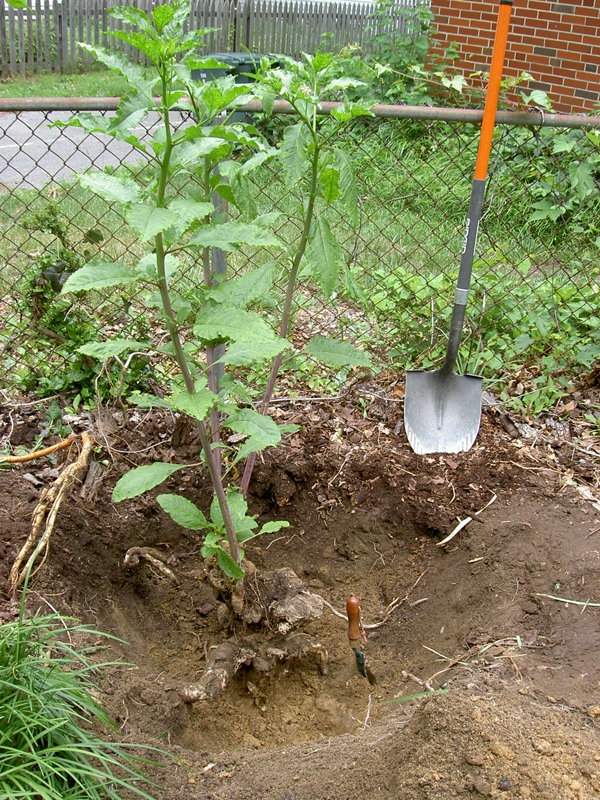
In the end, we had to dig down about two feet to the clay layer, and even so we left some smaller pieces of root that just refused to be dislodged. We had three roots this size to get out, and maybe a half dozen half that size. Plus innumerable little new ones from the berries. But we did it, and we now have a bare, soon to be mulched, area across the back of our yard where we previously only had crazy big weeds. Go us!
My goal is to have the invasives cleared out of the yard — side beds the length of the backyard and beds all around the house — and under mulch by the fall. We’ll be doing a little transplanting, such as moving the bulbs and the lily of the valley to more suitable and less crowded spots, but mostly this is the year of killing. Since it’s now officially summer (a belated happy solstice!) and we’ve cleared maybe a fifth of what needed to be done during the spring, I think we will be lucky to make it by the first hard frost. Granted, we started with the worst fifth, so there’s hope that the rest of it will go more quickly. And, we won’t have to do this again after this year. Or at least that’s the hope, that once we get things cleared out the whole thing will be much easier to maintain.
